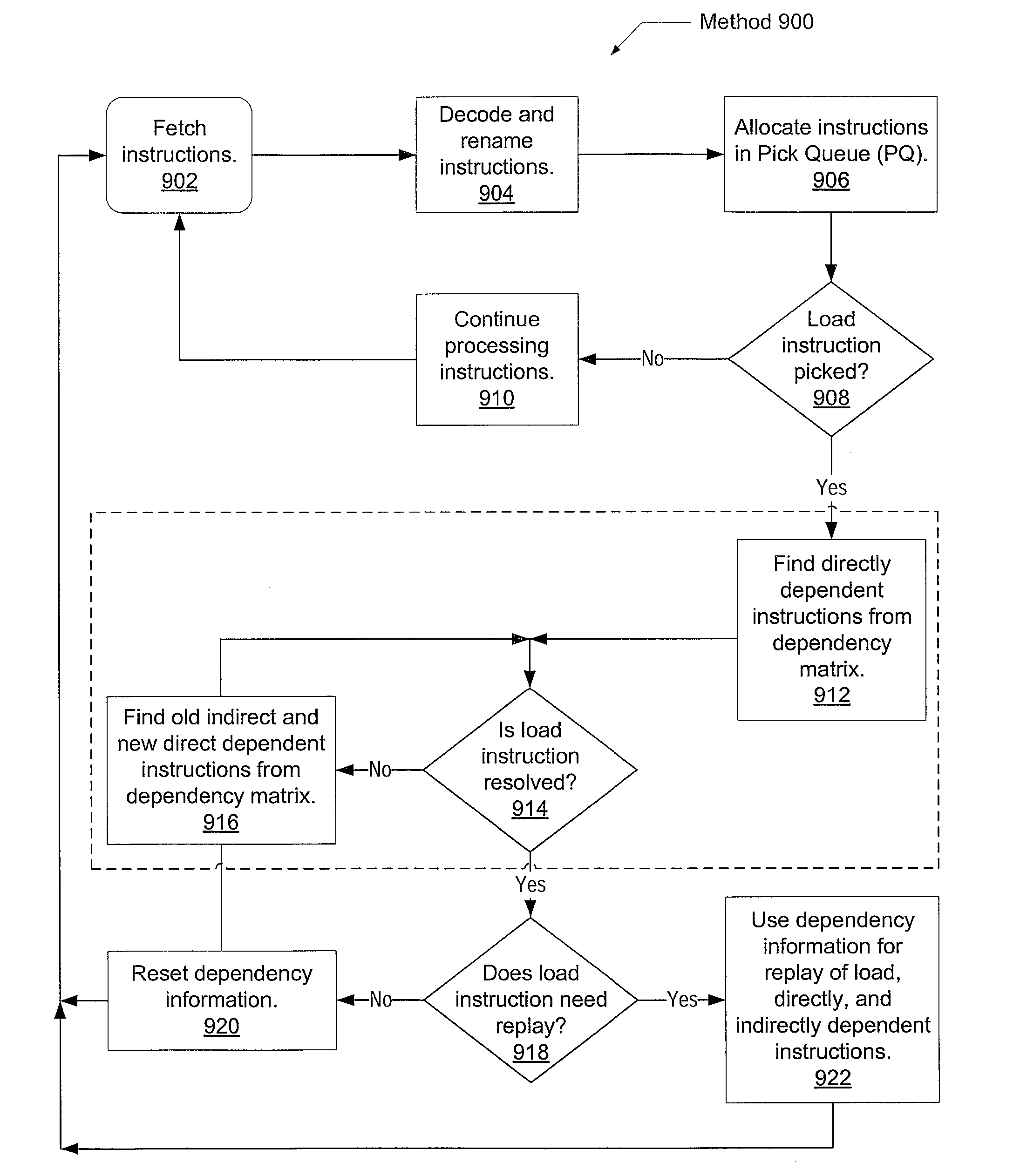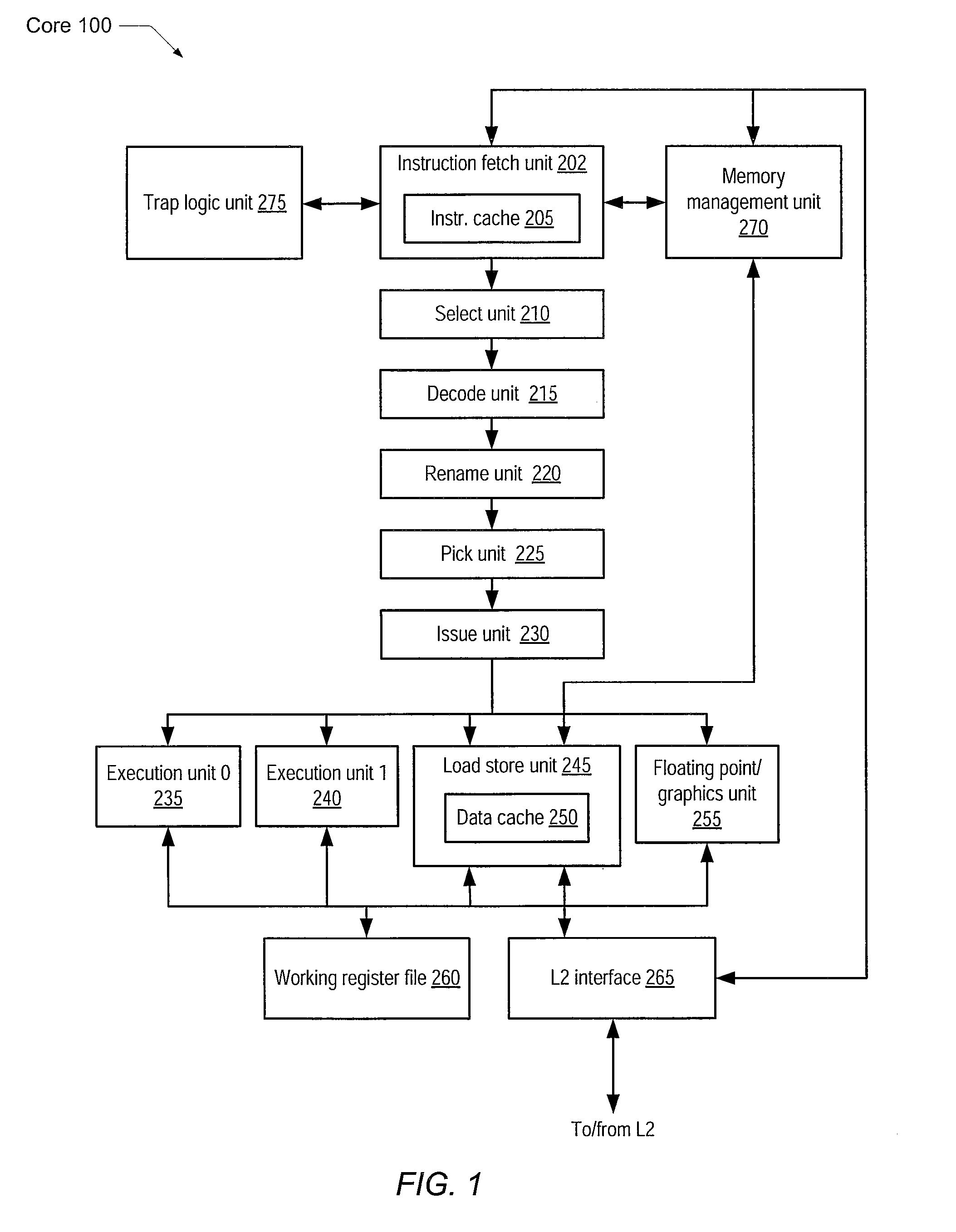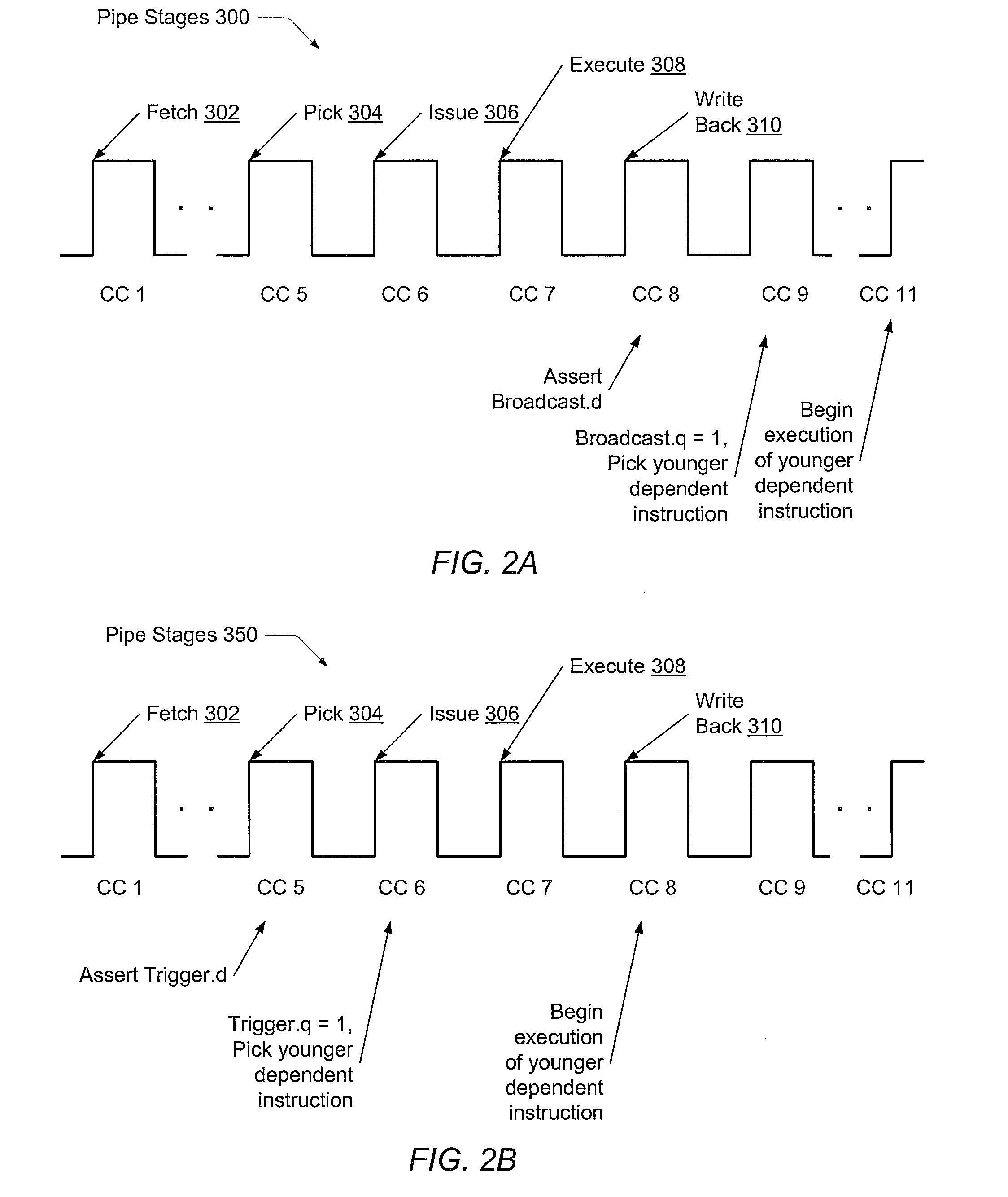Dependency matrix for the determination of load dependencies
a load dependency and dependency matrix technology, applied in the field of computing systems, can solve the problems of microprocessors that typically have a larger pipeline depth, increase microarchitectural complexity, and occur in misprediction of speculative load
- Summary
- Abstract
- Description
- Claims
- Application Information
AI Technical Summary
Benefits of technology
Problems solved by technology
Method used
Image
Examples
Embodiment Construction
[0031]In the following description, numerous specific details are set forth to provide a thorough understanding of the present invention. However, one having ordinary skill in the art should recognize that the invention may be practiced without these specific details. In some instances, well-known circuits, structures, signals, computer program instruction, and techniques have not been shown in detail to avoid obscuring the present invention.
[0032]Referring to FIG. 1, one embodiment of a processor core 100 configured to perform dynamic multithreading is shown. Processor core, or core, 100 processor core 102 may utilize conventional processor design techniques such as complex branch prediction schemes, out-of-order execution, and register renaming techniques. Core 100 may include circuitry for executing instructions according to a predefined instruction set. For example, the SPARC instruction set architecture (ISA) may be selected. Alternatively, the x86, x86-64, Alpha, PowerPC, MIPS...
PUM
 Login to View More
Login to View More Abstract
Description
Claims
Application Information
 Login to View More
Login to View More - R&D
- Intellectual Property
- Life Sciences
- Materials
- Tech Scout
- Unparalleled Data Quality
- Higher Quality Content
- 60% Fewer Hallucinations
Browse by: Latest US Patents, China's latest patents, Technical Efficacy Thesaurus, Application Domain, Technology Topic, Popular Technical Reports.
© 2025 PatSnap. All rights reserved.Legal|Privacy policy|Modern Slavery Act Transparency Statement|Sitemap|About US| Contact US: help@patsnap.com



